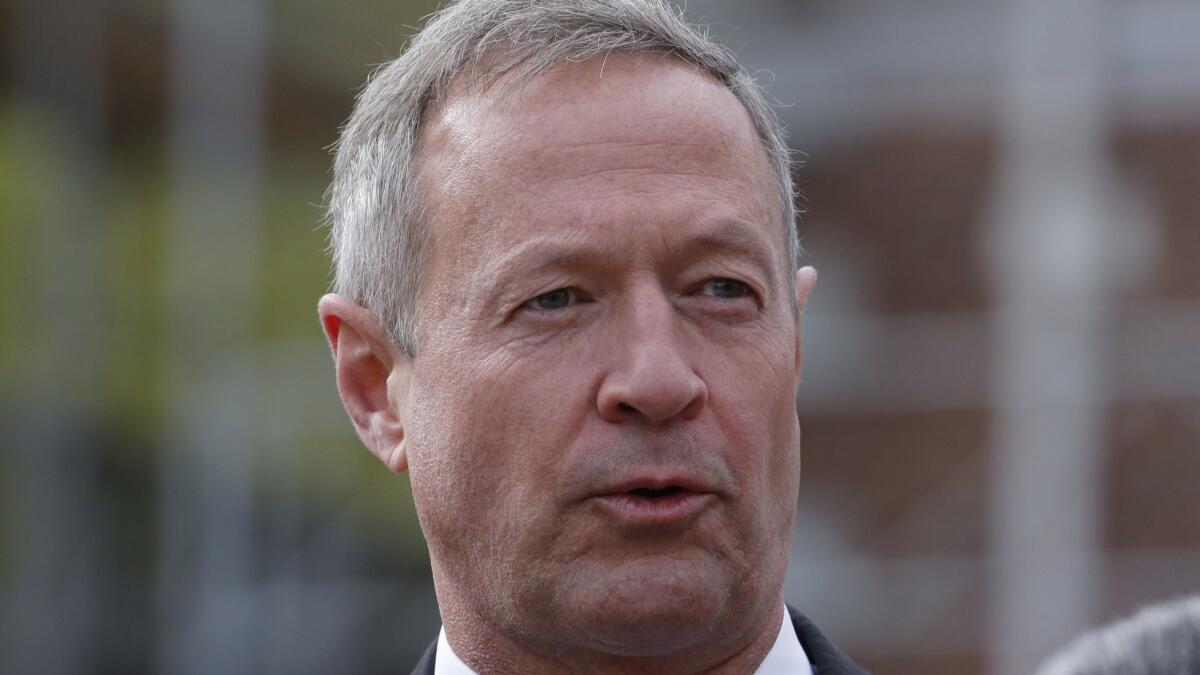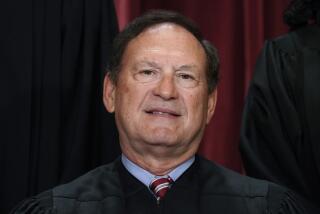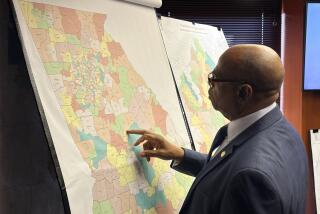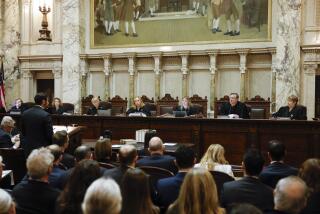Supreme Court justices troubled by partisan gerrymandering, but unsure how to control it

Supreme Court justices, hearing arguments Wednesday in a Maryland gerrymandering case, signaled again they are troubled when politicians draw election districts solely to give their party more seats in Congress.
But they appeared equally frustrated over the question of what — if anything — the court should do about it.
The Maryland case seemed to most of the justices to represent an extreme and obvious example of partisan gerrymandering, which, unlike racial gerrymandering, has not been outlawed.
“What is this, except about politics?” Justice Elena Kagan asked a state lawyer for Maryland. She said the Legislature under Democratic control had shifted 350,000 voters and transformed a strong Republican district into one that now reliably elects another Democrat to Congress. “However much you think is too much, this case is too much,” she said to laughter in the courtroom.
Others agreed. Chief Justice John G. Roberts Jr. agreed that the state has redrawn its districts “to prefer one party over another.”
But to a surprising degree, the justices still seemed uncertain as to how to rule. Roberts and Justice Samuel A. Alito Jr. said legislatures have to redraw districts after the census, and politics will invariably play some role in how the lines are drawn.
“This seems like a pretty clear violation of the Constitution in some form to have deliberate, extreme gerrymandering. But is there a practical remedy that won’t get judges involved in every, or dozens and dozens of very important political decisions?” asked Justice Stephen G. Breyer in a question that went largely unanswered and seemed to hang over the argument.
The constitutionality of partisan gerrymandering is the most significant question before the court this term. Since the 1980s, the justices have repeatedly criticized politicians for drawing election districts that entrench their party in power. But they have also repeatedly failed to rule that such politically motivated redistricting violates the Constitution.
This decade has seen more extreme gerrymandering, particularly in battleground states such as Michigan, Ohio, Wisconsin, Pennsylvania and North Carolina. Republicans won sweeping victories in the 2010 midterm elections, and they used their power to redraw election maps so as to maintain control of the House of Representatives. Ohio, for example, has 12 Republicans and four Democrats in the House. North Carolina has a 10 Republicans and three Democrats. A three-judge federal court struck down North Carolina’s map as unconstitutional, but the Supreme Court in January put that decision on hold.
Pennsylvania had steadily elected 13 Republicans and five Democrats, but the state Supreme Court struck down the map in January and had it redrawn. The Supreme Court turned down appeals from the state’s Republicans leaders and refused to intervene.
Regardless of how the high court rules in the Maryland case or a still pending case from Wisconsin, the rulings are unlikely to affect the 2018 elections. The justices have said they will avoid changing the rules during an election year.
But redistricting experts warned that a failure to rule against purely political gerrymandering could trigger even more partisan schemes after the 2020 election. That year, when President Trump is expected to seek reelection, “could be a wave year for Democrats,” said Michael Li, a lawyer for the Brennan Center at New York University. If so, they could use their control over the election maps to give Democrats a decade-long advantage in Congress.
As is frequently the case, Justice Anthony M. Kennedy holds the deciding vote, and his comments Wednesday should give some cheer to opponents of partisan gerrymandering.
He said it would be unconstitutional for the state to say by law that it will give “a partisan advantage for one party” whenever it draws new election districts.
“How is this case different?” Kennedy asked Steven Sullivan, Maryland’s state solicitor.
The law did not say its intent was to ensure that a Democrat won what had been a solid Republican district, he replied.
“So if you hide the evidence of what you’re doing, then you’re going to prevail?” Kennedy interjected with a tone of sarcasm.
The exchange suggested that Kennedy and the court’s four liberal justices could form a majority, saying a purely partisan election map is unconstitutional.
But Breyer’s comments also suggested that the court has not settled on the right answer. “What do we do?” he asked one lawyer. He said the court might want to have all three cases—Wisconsin, North Carolina and Maryland—brought back for a re-argument in the fall. His comment seemed to signal that the justices have not agreed on a ruling in the Wisconsin case.
However, the strength of the evidence in the Maryland case could force the court to rule.
“Here the evidence is unequivocal,” Michael Kimberly, a lawyer for the challengers, told the justices. The Maryland Democrats “succeeded in rigging an election” by changing the boundaries of a congressional district. And the court, he said, should say this violates the free-speech rights of Republicans who were moved out of the old district to ensure a Democrat would win it.
The justices heard arguments in a Wisconsin gerrymandering case in early October but have yet to issue a ruling.
In Gill vs. Whitford, the court is deciding whether Republicans went too far when they drew a statewide election map that gave the GOP a super-majority in the statehouse in Madison, even when Democrats won more votes across the state.
The Maryland case, Benisek vs. Lamone, tilts the other way politically.
Until now, the court’s conservatives have voiced the most reluctance to interfere with election maps drawn by state lawmakers.
Maryland’s current governor, Larry Hogan, a Republican, joined by former California governors Arnold Schwarzenegger, a Republican, and Gray Davis, a Democrat, and Ohio Gov. John Kasich, a Republican, filed a friend-of-the-court brief urging the justices to take strong action.
“The hyper-polarized, hyper-partisan nature of redistricting today reveals the breakdown of the political process in many states,” they said.
Hogan said he would like to see a nonpartisan redistricting commission in his state, similar to one created in California.
Major questions before the Supreme Court this year »
On Twitter: DavidGSavage
UPDATES:
1:50 p.m.: This article was updated with additional details from the arguments.
9:25 a.m.: This article was updated with arguments before the court.
This article was originally published at 3 a.m.
More to Read
Get the L.A. Times Politics newsletter
Deeply reported insights into legislation, politics and policy from Sacramento, Washington and beyond. In your inbox three times per week.
You may occasionally receive promotional content from the Los Angeles Times.







